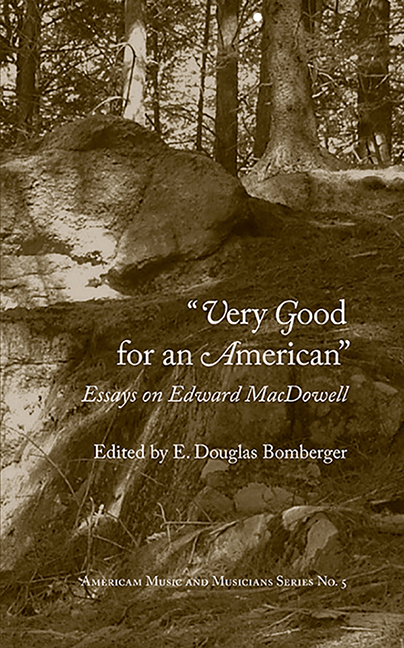Book contents
- Frontmatter
- Table of Contents
- Illustrations
- Contributors
- Acknowledgments
- Introduction: MacDowell at 150
- Edward MacDowell and the Society of Friends
- Historical Concerts in New York City, 1860-1876: An Approximation
- “No MacDowell, No Carreño”: Teresa Carreño's Contributions to the Dissemination of Edward MacDowell's Piano Music
- MacDowell, Liszt, and the Symphonic Tone Poem
- Wagnerian Influence and Motives in the Works of Edward MacDowell
- “On Sundays there was the music …” George Whitefield Chadwick between symphony and organ
- MacDowell vs. Butler: The “Idealist” Professor and the Administrator of “Materialism”
- Parallels in the Careers of Edward A. MacDowell and Chou Wen-chung
- American Bayreuth: The 1910 Peterborough Pageant and the Genesis of the MacDowell Colony
- Selective Bibliography
- Index
Historical Concerts in New York City, 1860-1876: An Approximation
- Frontmatter
- Table of Contents
- Illustrations
- Contributors
- Acknowledgments
- Introduction: MacDowell at 150
- Edward MacDowell and the Society of Friends
- Historical Concerts in New York City, 1860-1876: An Approximation
- “No MacDowell, No Carreño”: Teresa Carreño's Contributions to the Dissemination of Edward MacDowell's Piano Music
- MacDowell, Liszt, and the Symphonic Tone Poem
- Wagnerian Influence and Motives in the Works of Edward MacDowell
- “On Sundays there was the music …” George Whitefield Chadwick between symphony and organ
- MacDowell vs. Butler: The “Idealist” Professor and the Administrator of “Materialism”
- Parallels in the Careers of Edward A. MacDowell and Chou Wen-chung
- American Bayreuth: The 1910 Peterborough Pageant and the Genesis of the MacDowell Colony
- Selective Bibliography
- Index
Summary
When Edward MacDowell was born in New York City, on December 18, 1860, the city's population exceeded 800,000. By April 1876, when he, encouraged by his teacher, Cuban-born pianist Pablo Desvernine (1823–1910), moved to France, expecting to be admitted at the Paris Conservatoire, the population—old-time city residents as well as new immigrants, mostly from Britain, Ireland (like MacDowell's ancestors), Germany, Eastern Europe, and Scandinavia— had soared well above 1.5 million. In the course of those fifteen years, the spectrum of New York's musical life became as culturally diversified as its residents. No matter how “secluded” in the comfort of bourgeois surroundings the young MacDowell might have grown up, he could not have remained unaware of the bustling variety of musical stimuli the city offered: indirectly but unquestionably, that multi-cultural environment molded him as an individual and as a composer.
In the 1860s, orchestral music in New York City was mainly provided by the Philharmonic Society and the orchestra led by Theodore Thomas (founded in 1842 and 1862, respectively). Opera reigned supreme, with various companies offering, often simultaneously, Italian, German, and French opera throughout the musical season and beyond. Chamber music also thrived, propelled by the formation of the Mason and Thomas Chamber Music Soirées in 1855. The “historical concert,” a type of musical event closely related to another novel format—the piano recital—which aimed to unite entertainment and enlightenment, emerged in New York around the time MacDowell was born; by the time he left, it had become an established format.
By mid-century, a historical concert (or recital, for both terms were interchangeable) was a type of musical event in which a number of works from the past, usually presented in a reasoned, chronological fashion, were performed by a solo pianist, or by a pianist and a singer or, more rarely, by a pianist and another instrumentalist. By contrast, the purpose of the dominant type of concert at the time, the so-called “miscellaneous concert,” was to entertain; typically, programs featured a variety of genres and timbres, including arias and ensembles from operas, art and popular songs, and instrumental ensembles and solos. A sacred piece and—depending on the budget—an orchestral work or two might also be included.
- Type
- Chapter
- Information
- Very Good for an AmericanEssays on Edward MacDowell, pp. 31 - 52Publisher: Boydell & BrewerPrint publication year: 2017

